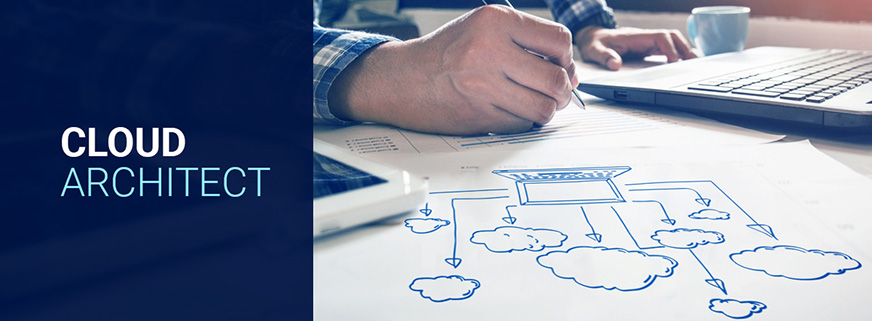Improve Your Work and Transform Your Business with Cloud Solutions
 Hazza institute Of technology
Hazza institute Of technology
Cloud solution architecture is transforming how businesses operate, providing scalable, reliable, and efficient IT solutions. This comprehensive guide will help you understand the fundamentals of cloud architecture, its benefits, and how to design and implement effective cloud solution architecture for your organization.
Main points of Cloud Architecture
Understanding the key components of cloud architecture is essential for designing robust cloud solutions. These components include computing resources, storage solutions, networking infrastructure, and security measures. Each component plays a vital role in ensuring the efficiency and reliability of your cloud infrastructure.
Computing Resources
Cloud computing resources, such as virtual machines (VMs) and containers, provide the processing power needed for applications to run. Learn about different types of compute services, their use cases, and how to choose the right one for your needs.
Storage Solutions
Cloud storage solutions offer scalable and durable storage for your data. Explore the various types of cloud storage, including object storage, file storage, and block storage, and understand how to manage data lifecycle and access efficiently.
Networking Infrastructure
Networking is a critical aspect of cloud solution architecture. Delve into virtual networks, subnets, and load balancers, and learn how to design a network architecture that ensures high availability and low latency.
Security Measures
Security is paramount in cloud architecture. Discover best practices for securing your cloud environment, including identity and access management (IAM), encryption, and compliance with industry standards.
Designing Your Cloud Architecture
Designing an effective cloud architecture involves several key steps. You'll need to assess your business requirements, choose the right cloud services, and design for scalability and resilience. This section will guide you through the process of creating a cloud architecture tailored to your organization's needs.
Assessing Business Requirements
Begin by understanding your business requirements and goals. Identify the key drivers for moving to the cloud, such as cost savings, scalability, or innovation, and define the specific needs of your applications and workloads.
Choosing the Right Cloud Services
Select the cloud services that best meet your needs. Compare offerings from leading cloud providers like AWS, Azure, and Google Cloud, and consider factors such as performance, cost, and ease of integration.
Designing for Scalability
Scalability is a core advantage of cloud computing. Learn how to design your architecture to handle varying loads, using techniques like auto-scaling and load balancing to ensure your applications remain responsive under any conditions.
Ensuring Resilience and Reliability
Design your cloud architecture for resilience and reliability. Implement strategies for disaster recovery, high availability, and fault tolerance to minimize downtime and ensure business continuity.
Implementing Your Cloud Solution
Implementation is where your architectural plans come to life. This section covers best practices for deploying your cloud infrastructure, managing resources, and optimizing performance.
Deployment Strategies
Explore different deployment strategies, including single-cloud, multi-cloud, and hybrid-cloud approaches. Understand the benefits and challenges of each, and learn how to deploy your solutions efficiently.
Resource Management
Effective resource management is crucial for cost control and performance optimization. Discover tools and practices for monitoring resource usage, automating resource allocation, and managing costs.
Performance Optimization
Optimize the performance of your cloud applications by implementing best practices for tuning, monitoring, and scaling with cloud solution architecture. Learn how to use performance monitoring tools to identify bottlenecks and ensure optimal application performance.
Monitoring and Maintenance
Ongoing monitoring and maintenance are essential to keep your cloud infrastructure running smoothly. This section provides guidance on setting up monitoring tools, implementing regular maintenance routines, and staying ahead of potential issues.
Setting Up Monitoring Tools
Implement comprehensive monitoring solutions to track the health and performance of your cloud infrastructure. Learn how to use tools like CloudWatch, Azure Monitor, and Google Cloud Operations Suite to gain insights and respond to issues promptly.
Regular Maintenance Routines
Establish regular maintenance routines to keep your cloud environment secure and up-to-date. This includes patch management, security audits, and performance reviews to ensure your infrastructure remains robust and compliant.
Proactive Issue Management
Stay ahead of potential issues by adopting a proactive approach to issue management. Set up alerting systems, automate responses to common problems, and continuously review and improve your architecture.
Future Trends in Cloud Architecture
The field of cloud solution architecture is constantly evolving. Stay informed about emerging trends and technologies, such as serverless computing, edge computing, and AI-driven cloud management, to ensure your architecture remains cutting-edge.
Serverless Computing
Explore the benefits and use cases of serverless computing. Understand how serverless architectures can simplify development, reduce costs, and improve scalability for specific applications.
Edge Computing
Learn about edge computing and its role in cloud solution architecture. Discover how edge computing can enhance performance and reduce latency by processing data closer to where it is generated.
AI-Driven Cloud Management
AI and machine learning are transforming cloud management. Understand how AI-driven tools can optimize resource allocation, predict failures, and automate routine tasks, making your cloud architecture more efficient and intelligent.
Conclusion
By mastering cloud solution architecture, you can drive significant improvements in your business operations. Whether you're just starting your cloud journey or looking to refine your existing architecture, this guide provides the insights and best practices you need to succeed. Keep learning, experimenting, and innovating to stay ahead in the rapidly evolving world of cloud computing.
Subscribe to my newsletter
Read articles from Hazza institute Of technology directly inside your inbox. Subscribe to the newsletter, and don't miss out.
Written by
